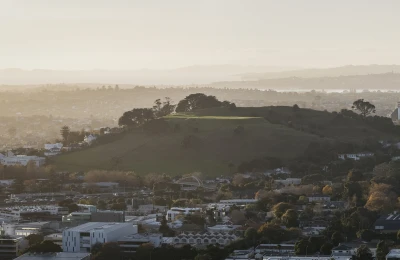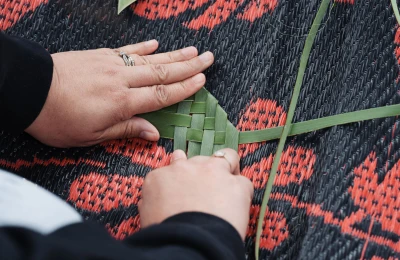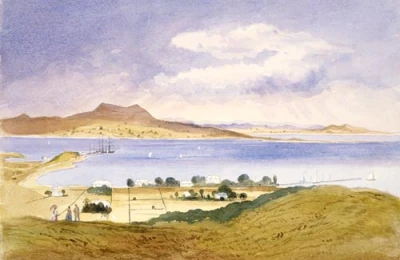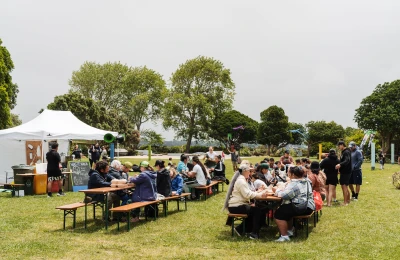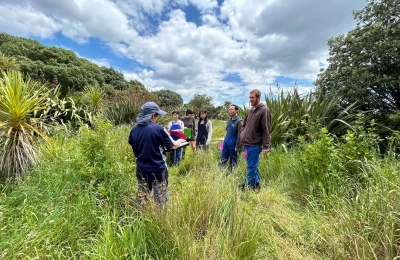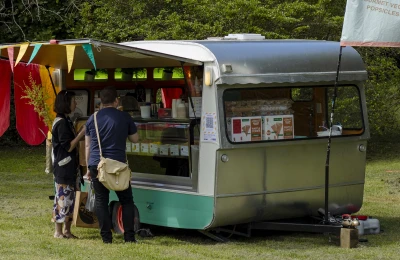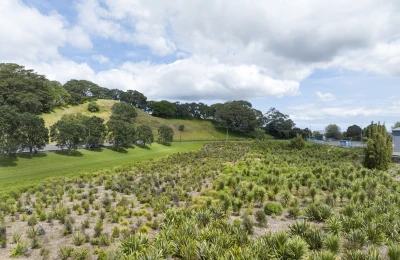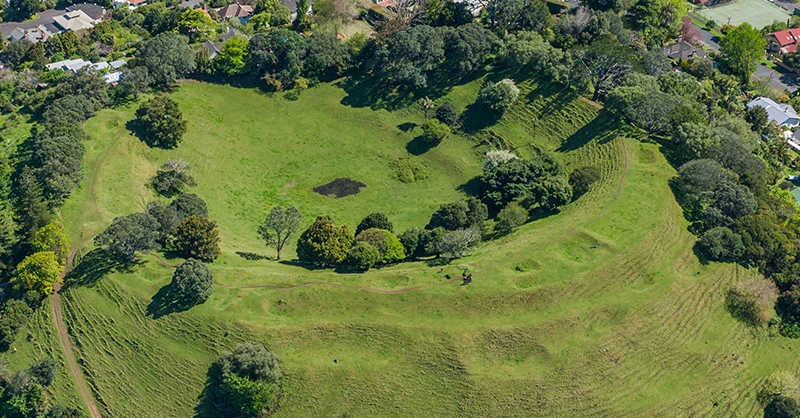PĀ
Te Kōpuke means ‘the prominent mound’.
Te Kōpuke / Tītīkōpuke was a Māori pā that once presided over a renowned gardening area. Historic food storage pits and terraces from the pā can still be seen.
The flattened crest is divided into several compartments with ditches and banks used for defense. The flatter areas of the terraces would have also been used for housing.
The Maunga remains a place of significance to Māori and an important archaeological site. Tread with care; keep to formed paths and avoid walking on the slopes or in the crater.
GEOLOGY
Though one of the lesser-known Maunga in the region, it is one of Auckland’s oldest volcanoes.
The exact age is unknown, but it is at least 28,500 years old as the scoria cone is blanketed with ash erupted from Te Tātua a Riukiuta / Big King in that period.
Studies of identity Te Kōpuke / Tītīkōpuke rock have confirmed the presence of lava that had erupted from Maungawhau / Mt Eden, Maungakiekie / One Tree Hill and Te Tātua a Riukiuta / Big King. This confirms that Te Kōpuke / Tītīkōpuke / Mount St John erupted well before these other major volcanoes.
The eruption created a crater that has survived through to present day, unlike many Auckland Maunga. The crater is approximately 125 meters wide and has a depth of 20 meters.
Lava flows breached the north-western side of the crater and also poured from its base, flowing like a river down a valley that passed beneath present-day Mt Eden and westward to join Waitematā River valley near Birkenhead. This river of lava cooled to form a ribbon of solid basalt and Auckland’s longest lava flow – 11 kilometres from source to toe.
MAIN ENTRANCE GATE OPENING HOURS
Summer: 7 am – 8.30 pm
Winter: 7 am – 7 pm
Times align with daylight-savings.
DOG RULES
Under control ON leash.
Please make sure to pick up after your dogs and dispose of waste in rubbish bins.
LOCATION
35 Mount Saint John Avenue, Epsom, Auckland
